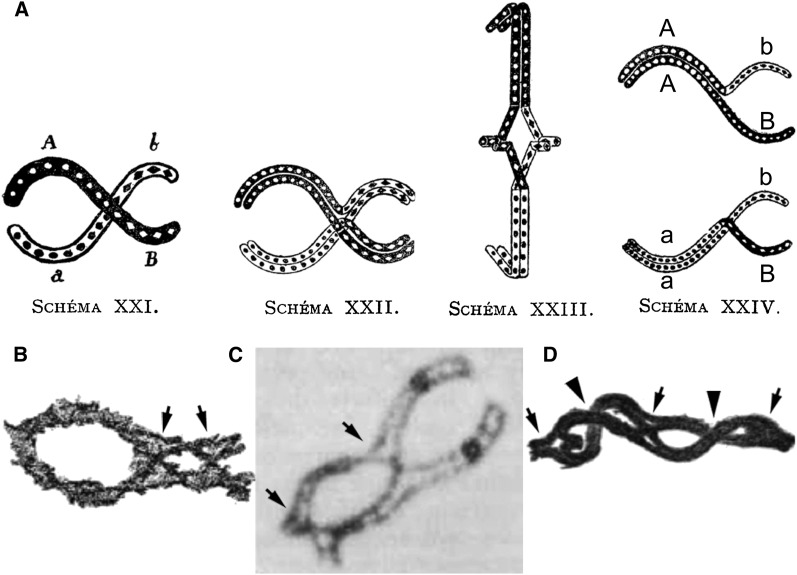Figure 3.
Drawings from Janssens’s 1909 article illustrating the exchange of chromosomal segments in chiasmata. (A) Schema XXI: drawing of a single chiasma between homologous chromosomes A, B (black) and a, b (white). Schema XXII represents the four chromatids (of chromosomes AB and ab) and the site where, according to Janssens, the break and reciprocal exchange occurred between two homologous chromatids of this diplotene “dyad.” Schema XXIII: anaphase I. Schema XXIV illustrates the consequence of the exchange between two of the four chromatids. Two of the resulting chromatids will remain parental, and thus AB and ab, and two will have recombined as Ab and aB. (B) Drawing from Janssen’s article illustrating the presence of two chiasmata (arrows) in a diplotene dyad. (C) Micrograph of a diplotene bivalent from the salamander Oedipina poelzi. In this case, the separation of the four chromatids allows a clear picture of the two chiasmata sites (arrows). The dark balls correspond to the centromeres. This picture was taken by the late James Kezer and kindly provided by Geoffrey K. Rickards. (D) Dyad with multiple chiasmata drawn by Janssens (figure 15 of his article) and used by Morgan in his book The Theory of the Gene (Morgan 1926, figure 27, p. 42) as a plausible, but not conclusive, cytological illustration of genetic crossing over. Note that three of the five “connections” are clearly chiasmata as indicated by the opening where two of the four chromatids exchange partners (arrows) while the two other connections (arrowheads) likely correspond to a superposition of the two homologs without exchange. It is this latter type of configuration (common in some organisms) that was used by several cytologists to criticize Janssens’s theory on the ground that there was no evidence for breakage and rejoining of chromatids at diplotene. Arrows in B, C, and D were added by the authors.

